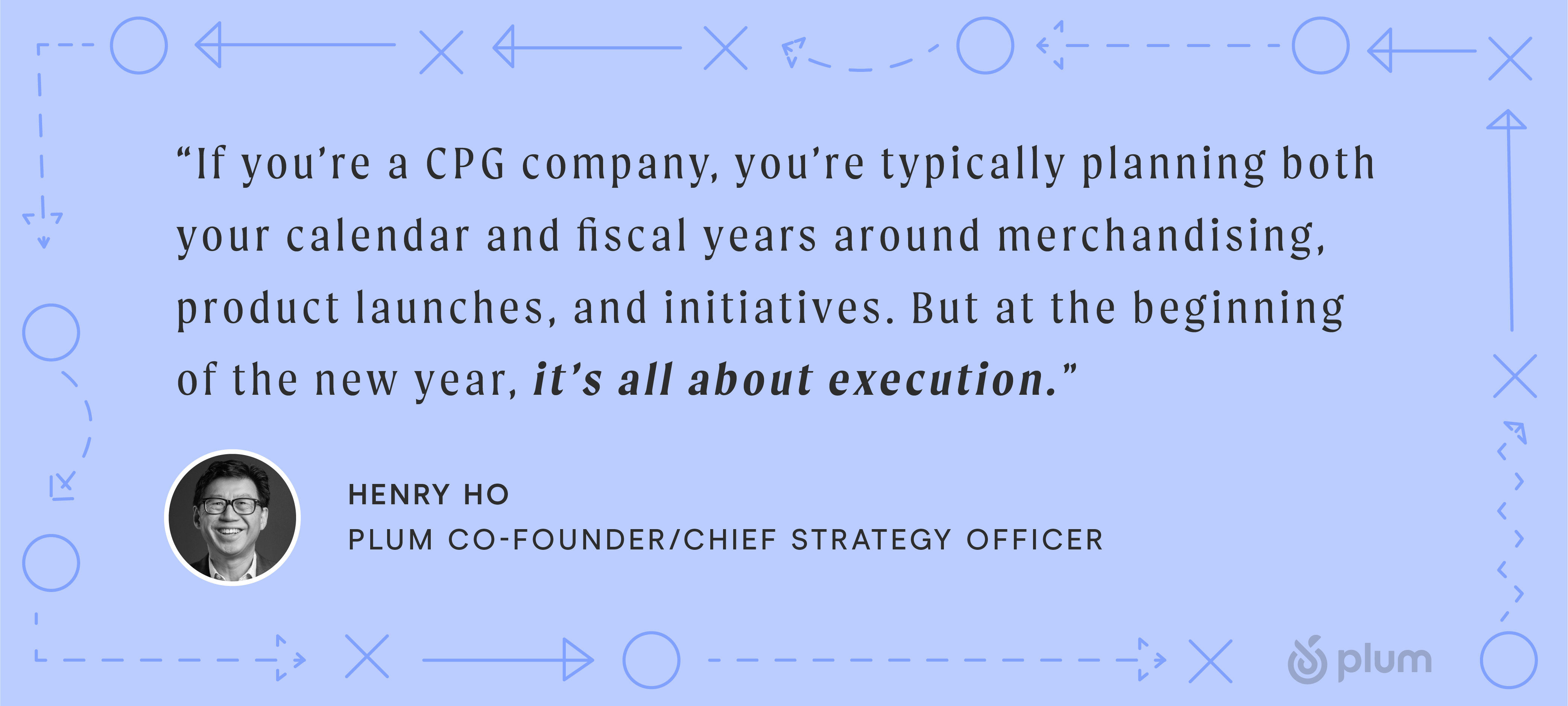
Your Jordan Year: How to Increase Retail Sales in 2023
Let’s talk about 1989.
No, not Taylor Swift’s fifth studio album. But, yes, we agree: iconic.
Specifically, we’re referencing May 7, 1989. (Some of you are already ahead of us.) The Richfield Coliseum was thundering with screaming fans as the Cleveland Cavaliers faced the Chicago Bulls. All eyes were glued to Michael Jordan.
The game was a back-and-forth, sending the crowd into a frenzy. Jordan was making shot after shot, seemingly scoring at will. The Cavs kept pace with the Bulls—sending the game into triple overtime. In the final overtime, Jordan took over. With three seconds left on the clock (Bulls 99, Cavaliers 100), he scored a 2-point buzzer beater. This led the Bulls to win the series, advancing through to the NBA finals. Jordan was at the height of his career. He was electric.
For those of you happily oblivious from the basketball world, have no fear. We’ll walk you through it. First thing’s first: legendary Michael Jordan’s jersey number was 23 — and, fun fact, it was retired from both the Chicago Bulls and Miami Heat.
Our analogy? 2023 is your Jordan year.
There’ll be competitors, tough odds, and distracting noise this year. (Maybe not “Danger Zone” from Top Gun distracting, but you get the point.)
We sat down with Henry Ho, Plum’s co-founder/chief strategy officer and a 40-year veteran of the global retail industry, to give you the scoop on what to expect and how to prepare for your brand’s best year yet.
Your Jordan Year: How to Increase Sales in 2023
Henry’s been keeping a watchful eye over the retail industry—sharing with us the challenges that brands will face in 2023. From the ever-looming recession (gulp) to major hiccups in the supply chain (wince), each brand’s economic stability will hang in the balance, pending on the ability to navigate every retail-related-wave. Like with basketball, brands must be adaptable in order to succeed. While players adapt to different opponents and strategies, business leaders (we’re looking at you) must adapt to changes in the market and shopper needs.
Changes? Well, let's just say things are about to get even more interesting than 2022. Stick along with us as we dive into the best ways to dominate in your court.
1. Slam Dunk Your Execution Strategy
Getting product out of the backrooms and onto the shelf—then off of the shelf into shopping carts—has always been the name of the game. But execution is vital as brands look to move holiday-themed product out, bring in the next season’s product, and in some cases, reset planograms. More on that later. Plus, it’s no secret that there have been inventory issues keeping product stacked up in the backrooms, creating the need for returns and markdowns.
With impending rollouts of merchandising and new execution, it’s time to correct the year of past overordering due to supply chain delays. Although the supply chain isn’t looking stable anywhere in sight until 2024, brand’s need to focus on clearing out excess and starting fresh with tighter inventories.
Plus, as retailers are still dealing with worker-shortages, you may need to bring in your own muscles (or… Field Agent’s) to check out-of-stocks and clean up your product-facings after the holiday rush.
2. Assist Your Ecommerce Pages
Now more than ever—thanks to lasting COVID-19 disruptions to consumer behavior—ecommerce sales channels are downright key to a brand wanting to win in the new year. The International Trade Administration predicts that retail sales through ecommerce will continue on the fast track through 2024 and beyond.
Hopefully if you’re here though, that comes as no surprise. Reaching and engaging with customers has both never been so simple yet never been so complex. Brands share they feel they’re having to yell through the noise of the internet—a chaos and volume overload.
We can’t share this enough: tactics like upping your search engine optimization (SEO), scouring your product pages, and investing in paid advertising are e-s-s-e-n-t-i-a-l. Even if you have just one product listed at Walmart, you won’t have just one ecommerce listing: you’ll have thousands with every store having its own product page for your item.
“Having a pulse on pricing across ecomm is so important,” Henry said. “You need the ability to check the markets that are important to you. Run a pricing report.”
3. Fast Break with Omnichannel Marketing
Siloed marketing channels are in the rearview mirror, and there’s no turning back. In 2023, successful brands will embrace an omnichannel approach if they want to reach and engage with customers across all channels. What does that mean, practically speaking? Using a combo of virtual and in-person channels to create a cohesive and consistent brand experience: social media, email marketing, in-store marketing, and direct mail.
“Whether you’re a big brand or a little brand, you need to focus on omnichannel marketing to drive offtake – whether it’s online or in store. It’s about the fundamentals,” Henry shared. “Getting products on the shelf when consumers want them, then working on ecommerce side of sales.”
Let’s timeout on that social media topic for a minute.
Hootsuite’s Global State of Digital 2022 report quoted that 57.5% of internet users aged 16 to 64 buy a product or service online weekly. Over half of shoppers on the internet buy a product every week, and 26% go straight to the social media platform to buy it.
The social media stage is a place your products need to consistently appear—not just with photo ads, but with dynamic video and user generated content.
Shoppers are continuing to look for phenomenal in-store experiences but from the comfort of their homes. As the consumer’s social media feeds are constantly updating, changing, growing, it’s imperative to hook their attention in an honest way. Consider adding in a brand video or have shoppers post authentic reviews of your product.
4. Square Up with Pricing Intelligence
Data and analytics? King.
Seeing the prices that your shoppers see is level 10 important to informing sales strategies in 2023. Try making data-driven decisions without data. In the retail world, data = audits. Running audits on how consumers are seeing your product helps mitigate potential problem areas, compare what your competitors are doing, and make those year-winning decisions.
“If inflation maintains at a current level, there’s going to be more pressure and tension in 2023,” Henry explains. “In ‘22, retailers worked with suppliers and allowed higher prices to pass through. But toward the second half of the calendar year, retailers pushed back due to escalating inflation and the impact on their customers. If your business continues to find pricing pressure in raw materials, logistics, and supply chain costs, it’s time to find creative ways to fight inflation.”
Having 20-20 vision into what competitors are doing and their ability to pass price changes across retailers? A given. With pricing management on the forefront, do you have a pulse on pricing changes from week to week, month to month?
Pricing intelligence and management will be vital in the coming year. Want the inside scoop on the way to promote sales in the pricing arena? We’ll tell you. It’s the ability to manage pricing in both directions: both going up and coming down.
“In my days of CPG, there’s the work of taking pricing up as one dynamic,” Henry says. “In commodity categories, managing pricing downward is just as important as taking them up. If competitors are taking pricing down, it’s essential to know what’s going on across the marketplace.”
5. Put Planogram Resets on Your Starting Lineup
It takes months to update a new planogram. (Or, "modular" for you Walmart gurus.)
In 2021 and 2022, the focus was just making sure product was on the shelf. Tough times. In 2023 as retailers are hitting the reset button, updating the planogram change schedules is coming into play as more of the categories need to be updated.
If you’re a big brand, category captain, MJ-level for a while now—you need to ensure your planogram execution is being handled correctly across all stores. We highly recommend auditing your current planograms and sending shoppers into stores to share if your resets are being executed to a ‘t.’
If you’re a smaller brand looking to get off the bench, you need to get insight on what’s going on—subscribing to a category within a retailer that you can see pre and post-planogram change intelligence.
6. Alley-oop Your 2023 Plans
Whether you’re in the process of developing new products, prepping for your upcoming buyer meeting, or rolling out a new go-to-market strategy, now’s the time to plan for success.
Some of you preferred suppliers have the home team advantage with advanced strategic planning—where retailers will partner with you to plan for the next two to three years out. Some of you smaller brands are looking to grow and scale. Either way, both need shopper insights to inform decisions about attracting and retaining customers.
“Data will inform how brands build for the future,” Henry concluded. “Let’s work together to get you quick, quality data that provides best coverage at the right value.”









